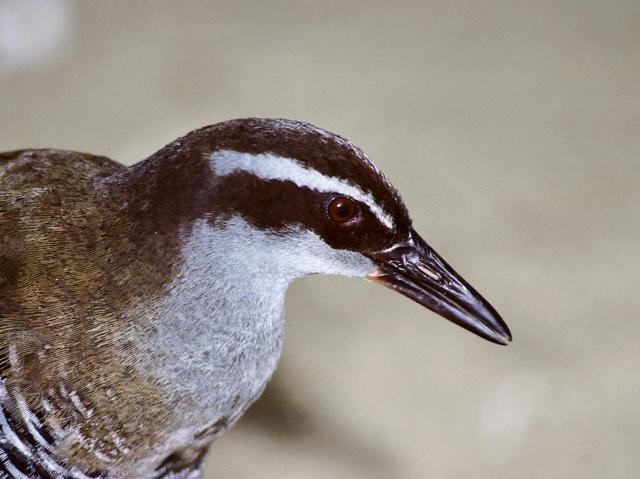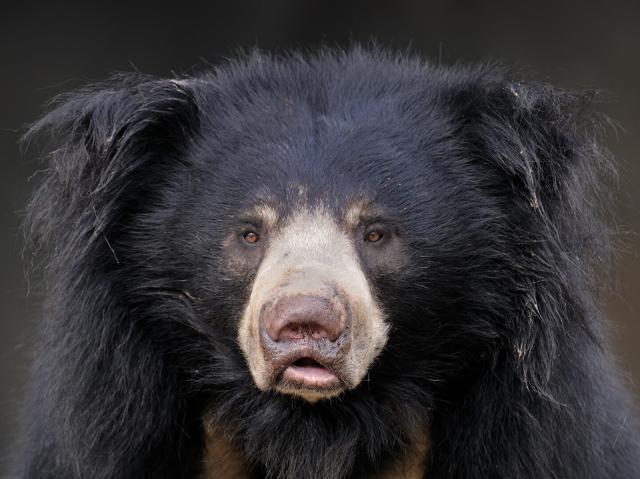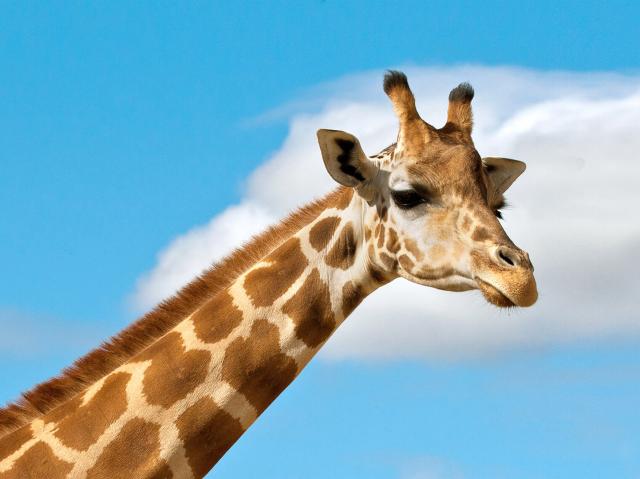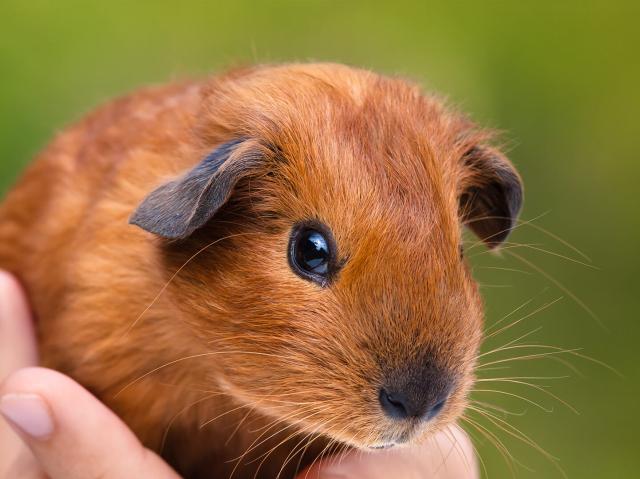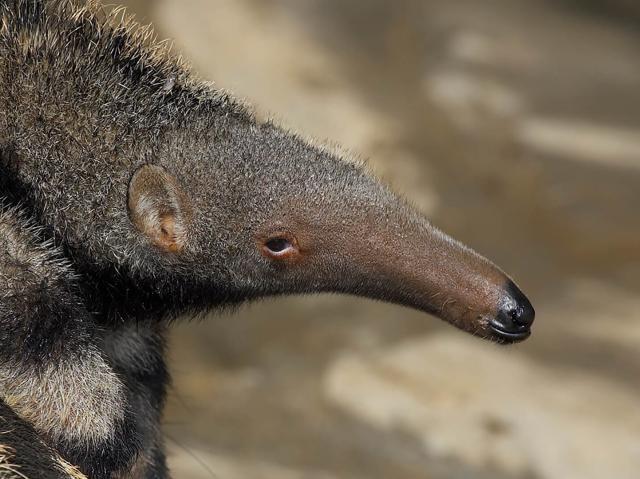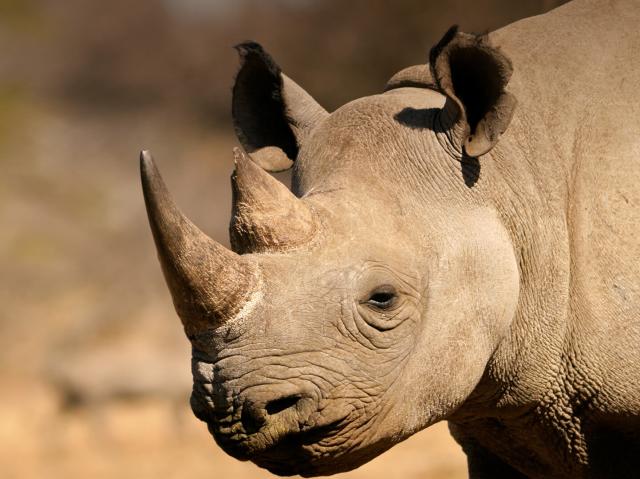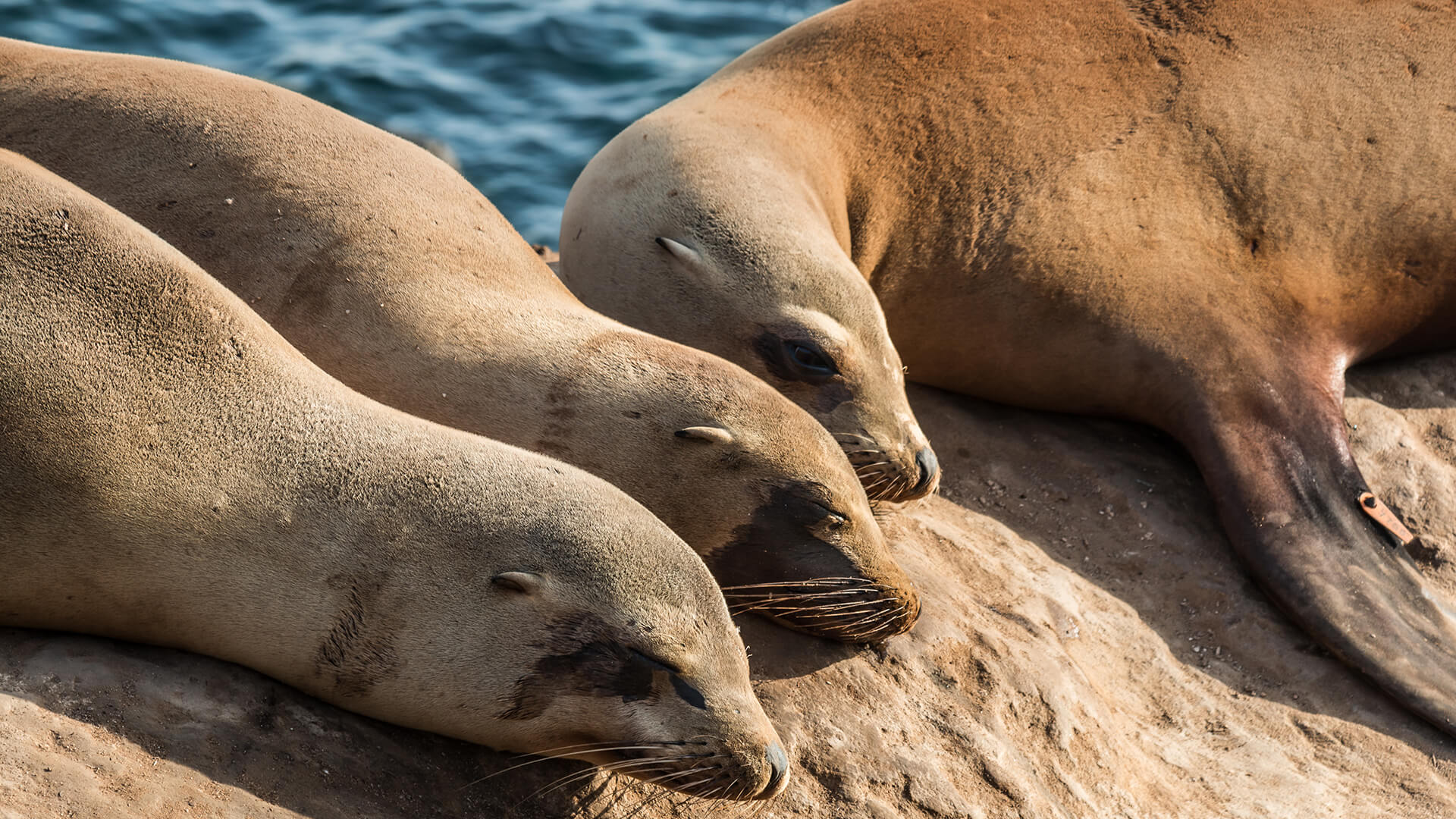
Sea Lion

- CLASS: Mammalia (Mammals)
- ORDER: Pinnipedia
- FAMILY: Otaridae
- GENUS AND SPECIES: Eumetopias jubatus (Steller’s or northern sea lion), Zalophus californianus (California sea lion), Zalophus wollebaeki (Galápagos sea lion), Otaria byrona (southern or South American sea lion), Neophoca cinerea (Australian sea lion), Phocarctos hookeri (Hooker’s, New Zealand, or Aukland sea lion)

ABOUT
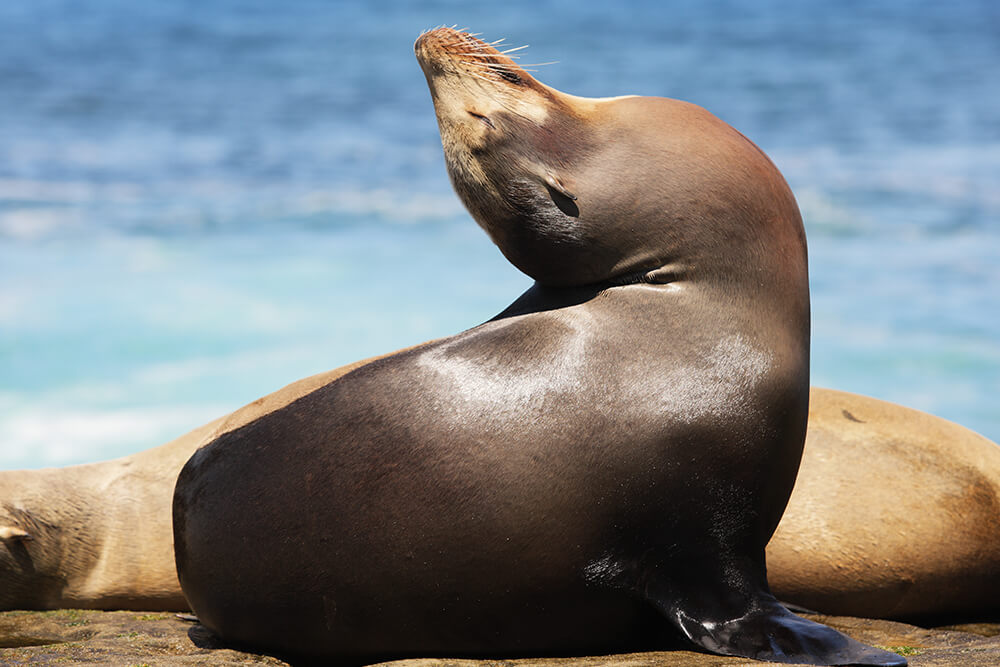
Sea lions and seals—what’s the difference? Sea lions, seals, and walruses are in a scientific group of mammals called pinnipeds, which means "wing foot" or "feather foot." You could probably pick out a walrus if you saw one, but how do you tell sea lions and seals apart? Sea lions and seals are marine mammals, spending a good part of each day in the ocean to find their food. They all have flippers at the end of their limbs to help them swim. Like all marine mammals, they have a thick layer of blubber to keep them warm in the chilly ocean. And they all like to eat fish—lots of fish!
So what do you look at to tell “who’s who?” Look at their ears. If you see a small earflap on each side of its head, you are looking at a sea lion. Seals just have a tiny opening for their ears. The sea lion’s earflaps are turned with the opening downward so water does not enter the ears. Sea lions are also able to rotate their hind flippers forward to help them scoot along beaches and rocky shorelines. Seals cannot do this and must wriggle, hunch, roll, or slide to get around out of the water.
There are six different species of sea lions. Here’s a brief overview on each:
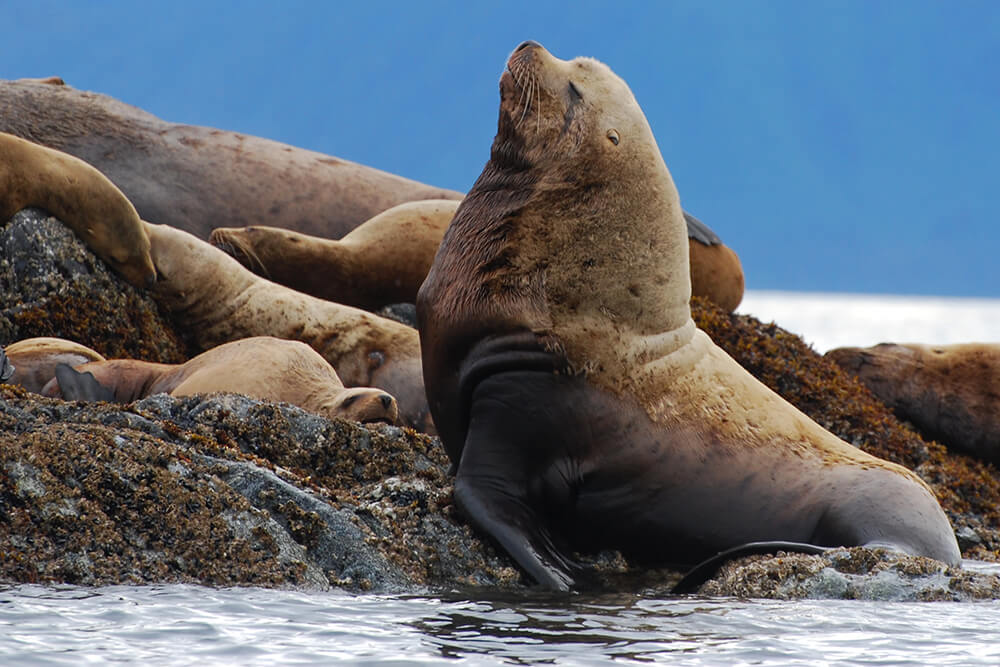
Steller’s or northern sea lion: This is the largest of the sea lions, with the adult male generally three times as large as the adult females and having a thick, hairy neck like a lion’s mane. Colors range from a light buff to a reddish brown. The Steller’s sea lion ranges from the Central California coast north to the Aleutian Islands and along the coast of eastern Russia south to South Korea as well as Japan.
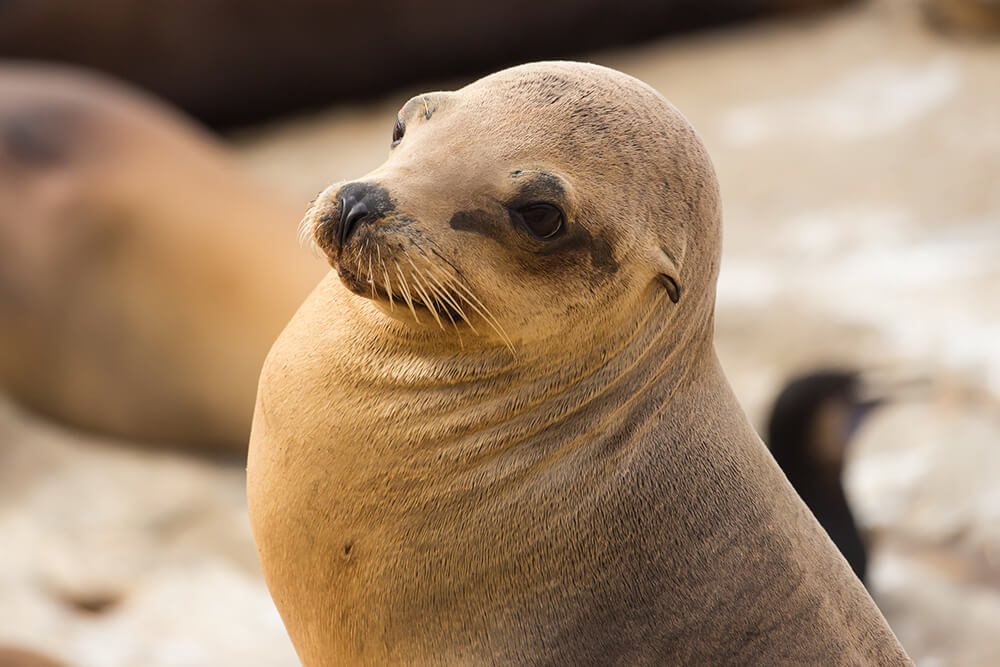
California sea lion: If you’ve ever seen a “seal” show, you most likely were watching these sea lions in action. They are found on the coasts of Japan and Korea, western North America from southern Canada to mid-Mexico, and the Galápagos Islands. Why are California sea lions often seen in shows at zoos and marine parks? They are intelligent, and they can learn to demonstrate many of their natural behaviors on cue. Clever California sea lions have delighted people with their abilities for decades.
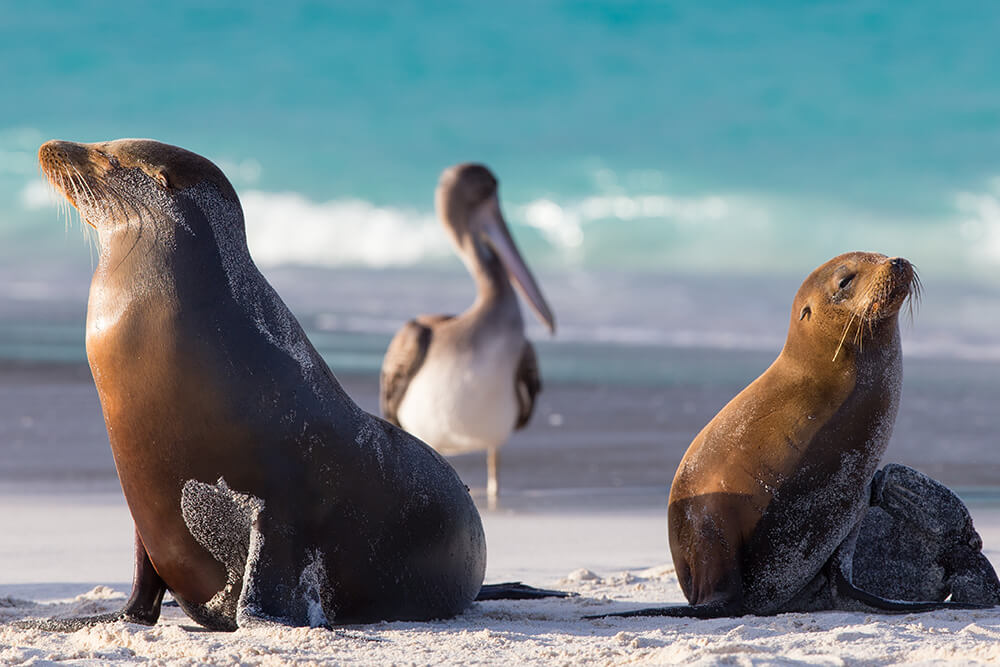
Galápagos sea lion: A bit smaller than their closest relative, the California sea lion, these sea lions live in the Galápagos Islands, with some closer to the coast of Ecuador.
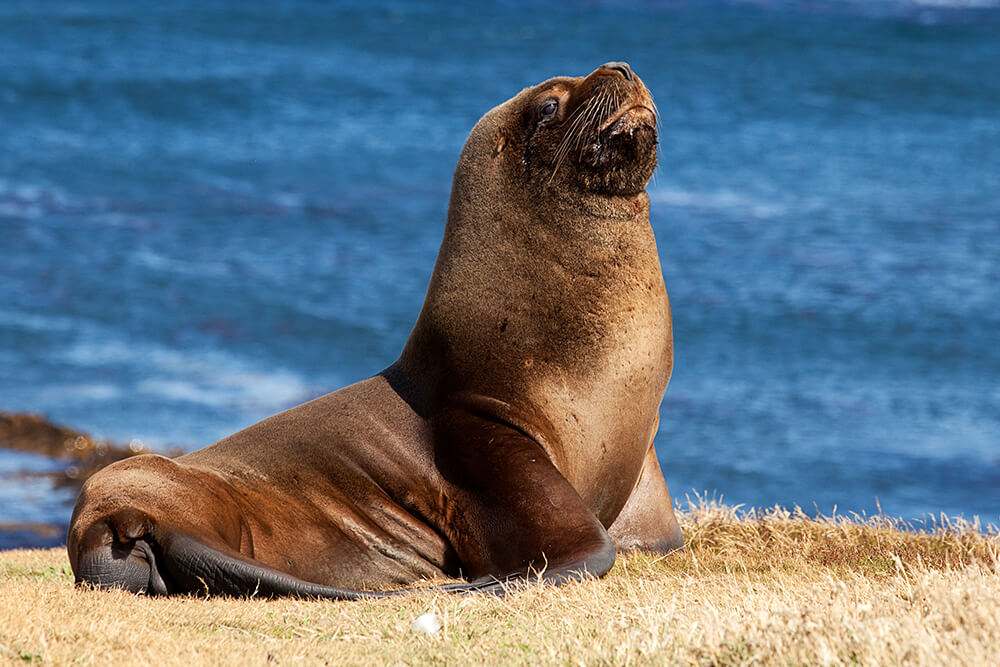
Southern or South American sea lion: A shorter and wider muzzle distinguishes this sea lion from the others. It is dark brown with a dark yellow or pale gold belly. The southern sea lion is found along the western and lower eastern coasts of South America and the Falkland Islands.
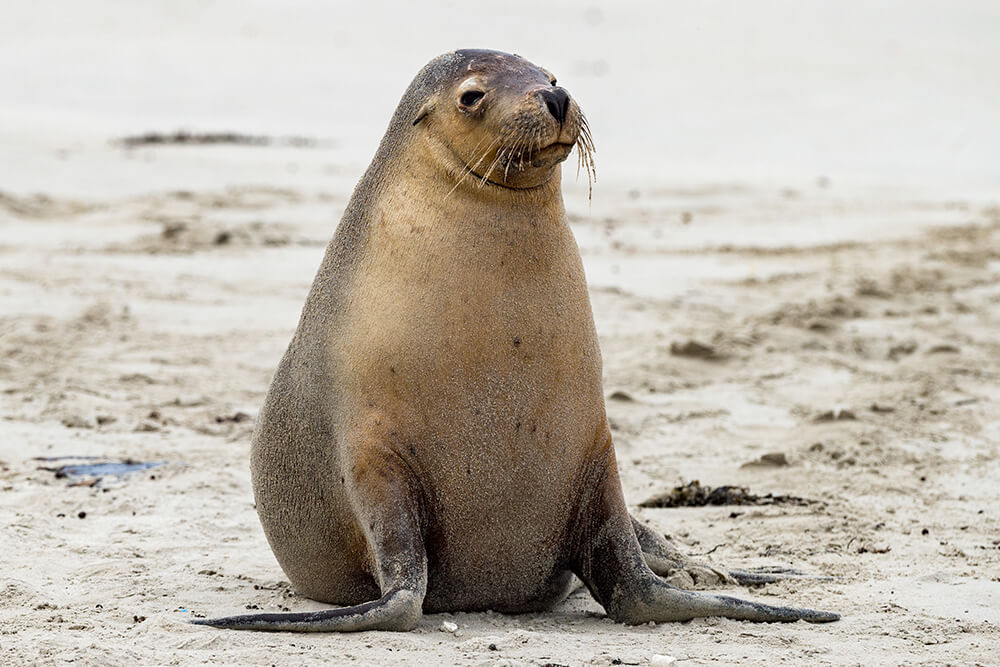
Australian sea lion: Adult male Australian sea lions have a white to yellowish mane against a very dark brown body. The sea lion ranges along the western and southern coast of Australia.
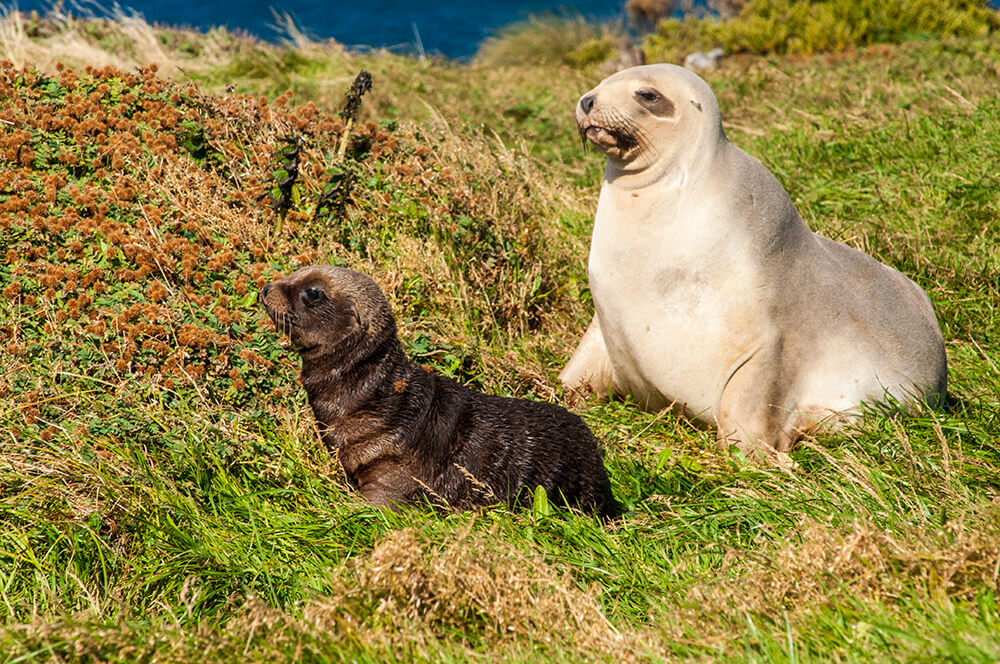
Hooker’s, New Zealand, or Auckland sea lion: Sporting a black or very dark brown coat, the Hooker’s sea lion is slightly smaller than its neighbor, the Australian sea lion. It is found along New Zealand’s coastline and has the smallest range of any sea lion. The New Zealand sea lion is classified as endangered.
HABITAT AND DIET
Sea lions live along the coastlines and islands of the Pacific Ocean. These fabulously aquatic mammals are extremely fit for what might seem like a harsh marine existence to us. A reflective membrane at the back of the eye acts as a mirror, bouncing what little light they find in the ocean back through the eye a second time. This helps them see underwater, where light may be scarce. Sea lions also rely on excellent senses of hearing and smell.
The front flippers are strong enough to support a sea lion on land. They also serve to help regulate the sea lion’s body temperature. When it is cold, specially designed blood vessels in the thin-skinned flippers constrict to prevent heat loss, but when it is hot, blood flow is increased to these surface areas to be cooled more quickly. When you see an odd group of dark “fins” sticking out of the water in California harbors, it is usually sea lions sticking their flippers into the air to cool off.
A sea lion’s sleek body is perfect for diving deep in the ocean (up to 600 feet, or 180 meters) in search of tasty fish and squid. Because sea lions are mammals and must breathe air, they can’t stay underwater forever! But with the help of nostrils that seal up automatically when they dive, a sea lion typically remain submerged for 10 to 20 minutes at a time. Sea lions are great swimmers, too, reaching speeds of 18 miles per hour (29 kilometers per hour) for short bursts. This helps them escape from their enemies, killer whales and sharks.
It can be pretty dark in the ocean, but sea lions can find their way around with the help of their sensitive whiskers. Each long whisker, called a vibrissa, is loosely attached to the sea lion’s upper lip. Like a straw in a soda bottle, each whisker can rotate around with the underwater currents, letting the sea lion "feel" any food swimming nearby.
All sea lions are carnivores, eating fish, squid, crabs, and clams. Steller sea lions also eat seals. Most food is just swallowed whole. Sea lions often toss the fish or squid up and around until it can slide headfirst down the mouth. They use their flat back teeth to crush food that has a hard shell before swallowing.
At the San Diego Zoo, sea lions are fed five different types of fish: capelin, squid, pompano, mackerel, and herring.
FAMILY LIFE

Life in a harem: Despite their adaptations for aquatic living, sea lions are still bound to the land for reproduction. Usually the males, called bulls, leave the water first in the spring to stake out territorial claims on ice, rocks, or the shore. The bulls gear up for this breeding season by gorging themselves on extra food to create an especially thick layer of blubber, allowing the individual to live for weeks without eating as he guards his territory and females. During the breeding season, bulls bark loudly and continuously to establish or defend their territories. Bulls also stare, shake their head, or lunge toward any opponent.
The bulls are several times larger that the adult females, called cows. During the breeding season, each adult bull tries to gather up as many cows as he can to form his "harem." Sea lion harems, or family groups, can number up to 15 cows and their young. The bull watches over his harem, protecting it from harm. But don’t think the harem has the place all to itself—popular resting spots can support dozens of harems. A large group of sea lions gathered together on land or floating ice is called a colony. During the birthing season these areas are known as rookeries.
The exception to this breeding behavior is the Australian sea lion bull; he does not stake out a territory or form a harem. Instead, the bulls fight for any available female.
Never timid about speaking what’s on their minds, sea lions make all sorts of barks, honks, trumpets, and roars. A baby sea lion, called a pup, can pick out its mother from among hundreds gathered on rocky shores just by the sound she makes. Between the bulls roaring, the mothers barking, and the pups bleating, the rookery is a noisy place indeed!
Several days or weeks after the bulls have established their territories on beaches and rocks, the breeding females come ashore to join them. Each male tries to herd as many breeding females as he can into a harem. Those females that conceived the year before are the last ones to arrive, gathering on land to deliver their pup. Sea lion females can delay implantation, which means that if a cow becomes pregnant, the fertilized egg only develops to a certain point before it temporarily stops growing until the time is right to continue. One hypothesis is that delayed implantation allows sea lions to combine the breeding season with the birthing season.
Female sea lions usually give birth to a single pup per year. Pups are born with their eyes open and their tummies ready for their mother's rich milk. The milk is high in fat, and this helps the pup grow that important layer of blubber to keep warm. Pups are born with a long, dense coat of hair called the lanugo that helps keep them warm until they develop that blubber. Mothers are very attentive to their pup during the first two to four days of life, nuzzling them and picking them up by the scruff of the neck. The pups are capable of awkward swimming at birth, but can walk at just 30 minutes old!

At just a few weeks of age, sea lion pups are ready for their first swimming and fishing lessons. They also must learn how to stay away from sharks and how to survive storms at sea! Nursing continues up to six months of age. After weaning, pups may stay with their mother at sea for up to one year.
CONSERVATION
Until recently, sea lions were hunted for their meat, skin, and oil. Some people even used sea lion whiskers for pipe cleaners! Many sea lion populations were wiped out as a result. Steller’s sea lions are endangered, possibly due to the effects of commercial fisheries on their prey. They were also accidentally killed when caught in commercial fishing nets and were shot on purpose by fishermen who believed the sea lions damage their nets. Protective zones and other measures around known Steller’s sea lion rookeries have been implemented. Other sea lions are experiencing declines as well, for many of the same reasons. Today, all sea lions are under the protection of the Marine Mammal Protection Act.
There were over 700 strandings of young sea lions from Washington State to Baja California, Mexico, in 2013, an indication that something unusual is going on in the ocean. Young sea lions typically leave their mother and go out on their own between eight months and one year of age, but if they are weaned early or orphaned, they may not have learned the skills needed to hunt for fish on their own. Scientists are looking at what role pollution may play in these strandings.
A neurotoxin called domoic acid is produced by algae during algae blooms and is called a red tide. Fish eat the algae, and sea lions and other marine predators eat the fish. High levels of domoic acid can lead to lethargy, seizures, and death. And pollution may have a significant role in more of these toxic algae blooms occurring. That’s why it’s so important to keep pollution and trash out of the ocean, and to recycle plastic. There is a correlation between NOT recycling and the emergence of excess domoic acid in marine mammals, a documented connection between wildlife and pollution.
You've probably heard it before, but it's still true: you can help protect sea lions by keeping plastic items out of our oceans. For example, the plastic rings around six-pack cans can be deadly for sea lions and other wildlife that may swallow them or become entangled in them.
By supporting San Diego Zoo Wildlife Alliance, you are our ally in saving and protecting wildlife worldwide.
Sounds
LIFE SPAN
20 to 30 years
YOUNG
Gestation: 8 to 18 months, depending on species
Number of young at birth: Usually 1, rarely 2
Size at birth: 2 to 3 feet (62 to 85 centimeters) long; 13 to 48 pounds (6 to 22 kilograms), depending on species
Age of maturity: Females, 3 to 8 years; males, 6 to 10 years
SIZE
Length: Females, 4 to 9 feet (1.3 meters); males, 6.5 to 11 feet (2 to 3 meters), depending on species
Weight: Females, 110 to 600 pounds (50 to 270 kilograms); males, 440 to 2,200 pounds (200 to 1,000 kilograms), depending on species
FUN FACTS
A group of sea lions in the water is called a raft.
It is believed that sea lions can see more clearly in water than on land.
Even though they have teeth, sea lions like to swallow their food whole if they can. Their sharp canine teeth are used mostly to protect themselves.
Sea lions don’t need to drink water—they get all the water they need from the food they eat.
Sea lions often hang out together in large, tight groups, even though there is room to spread out.



